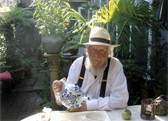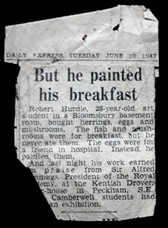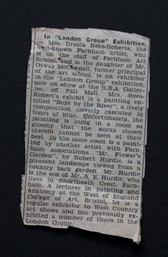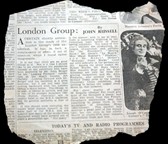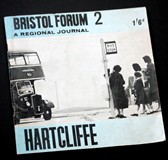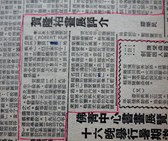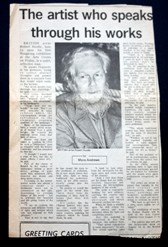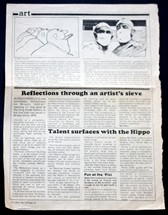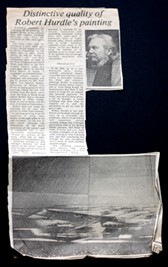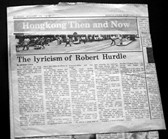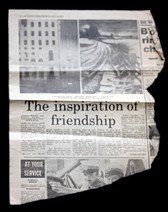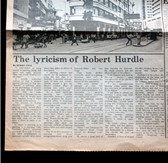Painters in Bristol
Robert Hurdle by Michael Jenner, Bristol Forum 2
The contribution which the painter or sculptor can make to his community is pervasive and very important. The least important part is the display of his work in the local art gallery. Far more important is the is his contribution to the life of the city merely by living in it - artists, contrary to the popular image, are usually very sociable people. The painter or sculptor who is able to live by his work without teaching is very rare; this is a matter of great complaint to the artists but it is another of the benefits which the community gets from him.
Bristol is fortunate in having resident a few artists of real calibre and several of great promise. In this issue of Bristol Forum we present the first of a series that will say something of these men and will reproduce a drawing by each.
Robert Hurdle was born in 1918 and was first taught painting at the Richmond School of Art. After spending the war with the Royal Engineers in bomb disposal, he went to the Camberwell School, which at that time, with Victor Passmore, Claude Rogers and William Coldstream on the staff, was perhaps the best in the country. He is now married with two children, lives in Clifton and teaches painting at the West of England College of Art.
His first paintings to attract attention were a series of paintings in the early fifties of Bristol landscapes, including many of the docks. At that time he worked by making drawings on the spot and painting from these in the studio. He worked slowly, taking immense time in each picture, sometimes as much as two years, though usually working on several at a time. The result was a magnificent series of paintings, most of which are now in private collections. One can only hope that Bristol City Art Gallery will acquire one while there are still some to be had. In some ways these pictures have a resemblance to the work of the Euston Road School, with a rigid though unobtrusive almost mathematical structure to them. Always, however, his work avoids the nostalgia, melancholy or disgust. Which is the twentieth century romantic's equivalent to the sentimentality of the nineteenth century.
It was an extraordinary shock when Passmore, a leading member of the Euston Road school, went abstract: but looking back one can see that it was the logical next step in his development. At about that time Hurdle's painting also underwent a major change, which now seems equally inevitable. It became more free, more apparently spontaneous. The pigment became thinner, often transparent. He altered his method of working with his easel out doors. He says:
'I enjoy working outside, beyond the confines of walls, I enjoy the sensation of being surrounded by my subject, feeling the same light and air, becoming thereby a part of the subject myself."
To resolve the subject I require my excitement to be controlled over a period of time. The painting is allowed to develop over days or weeks; its growth (if all goes well) should be inevitable and yet dependent on constant reference to the source.
I wish to abstract before nature, to allow nature to give certain harmonic relations of colour, certain rhythmic combinations of shapes."
That rarest of birds, a non-romantic English painter, Robert Hurdle is still a young man. He is a magnificent draughtsman, he is original and powerful. He is no weathercock, unable to exist without joining the popular movements of the day. One will watch his future development with great interest.
use slides to view full text and images, click on small pictures to see large version
